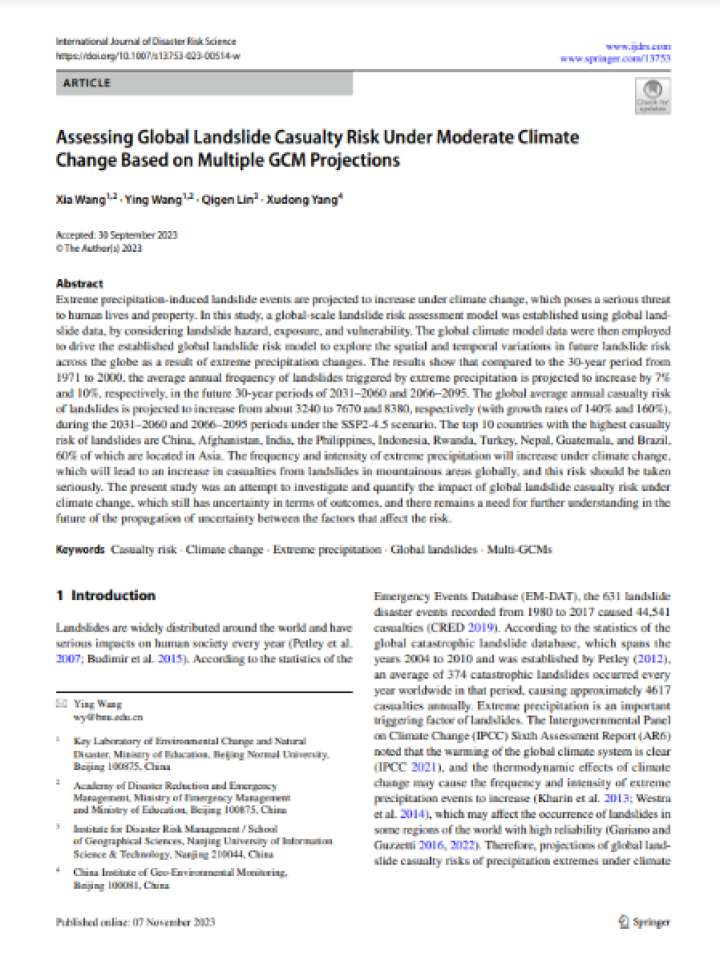Assessing global landslide casualty risk under moderate climate change based on multiple GCM projections
This study establishes a global-scale landslide risk assessment model using global landslide data, by considering landslide hazard, exposure, and vulnerability. Using the global climate model data, it aims to drive the established global landslide risk model to explore the spatial and temporal variations in future landslide risk across the globe as a result of extreme precipitation changes. Extreme precipitation-induced landslide events are projected to increase under climate change, which poses a serious threat to human lives and property.
The results show that compared to the 30-year period from 1971 to 2000, the average annual frequency of landslides triggered by extreme precipitation is projected to increase by 7% and 10%, respectively, in the future 30-year periods of 2031–2060 and 2066–2095. The global average annual casualty risk of landslides is projected to increase from about 3240 to 7670 and 8380, respectively (with growth rates of 140% and 160%), during the 2031–2060 and 2066–2095 periods under the SSP2-4.5 scenario. The present study was an attempt to investigate and quantify the impact of global landslide casualty risk under climate change, which still has uncertainty in terms of outcomes, and there remains a need for further understanding in the future of the propagation of uncertainty between the factors that fafect the risk.
Explore further
